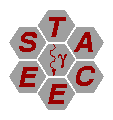
no frame

Inside STACEE
Science
People
Publications
Funding
Pictures (Collaborators only)

Related links:
CWRU STACEE/Auger
Barnard/Columbia STACEE
McGill U. STACEE
UCLA
Astroparticle Physics Home

Related Ground-Based Gamma-Ray Telescopes:
CANGAROO
(Woomera, Australia)
HESS
(Namibia)
CELESTE (Themis, France)
MAGIC (La
Palma, Spain)
Milagro (New Mexico, USA)
VERITAS (Arizona, USA)

STACEE Collaborators Only |
|
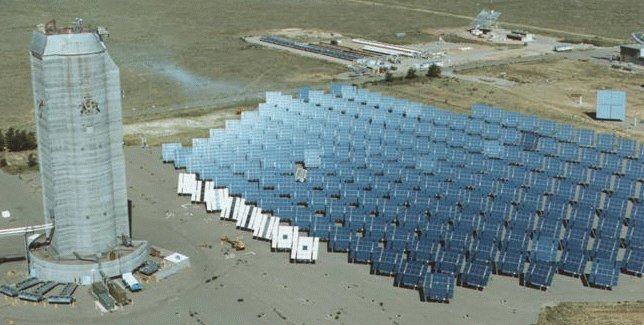 |
WHAT IS STACEE?
The Solar Tower Atmospheric Cherenkov Effect
Experiment (STACEE) was an experiment dedicated
to the study of high energy gamma
rays emitted by astrophysical sources.
We study gamma rays to learn how Nature's
powerful accelerators work and to search for
new physics beyond our current
theories. Astrophysical sources of gamma
rays include powerful objects such as neutron
stars, supernovae, and supermassive black
holes.
HOW DOES STACEE WORK?
STACEE used a large field of solar mirrors
(heliostats) at the National Solar Thermal
Test Facility near Albuquerque, NM. These
mirrors were built for solar energy research
conducted during the daytime. STACEE used
the mirrors at night for astronomy. The mirrors
collected quick flashes of blue Cherenkov light
that result from gamma-ray interactions in
the atmosphere. The Cherenkov light was then
detected and recorded by the STACEE equipment.
The National Solar Thermal Test Facility (NSTTF) is a national user facility for solar energy
research. It's primary mission is to carry
out research in the area of concentrated
solar energy, but we were able to use this
one-of-a-kind facility for astronomical research.
The NSTTF is funded by the U.S. Department of Energy, and managed by Sandia National Laboratories.
WHAT IS THE STATUS OF STACEE?
STACEE was built by scientists from several
universities in the U.S. and Canada between
1997 and 2001. Observations using the full
experiment started in October 2001 and continued
until June 2007. STACEE
detected gamma rays from sources such as
the Crab Nebula (a supernova remnant in our
galaxy) and Markarian 421 (a blazar at a
distance of 450 million light years).
Numerous other results are listed in the
Publications section.
|
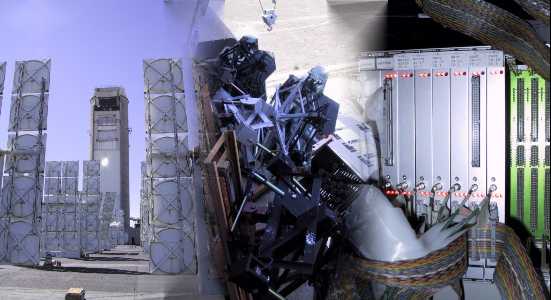 |
See how STACEE works.
|
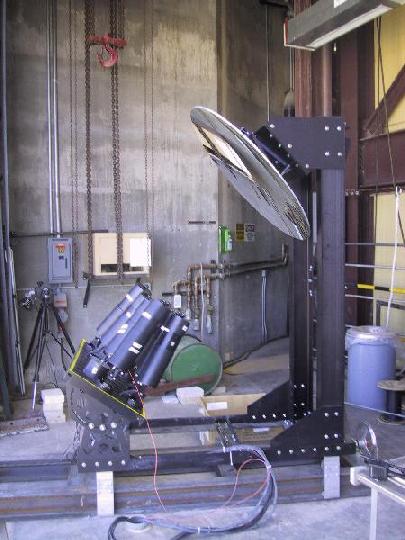 |
Exploring the Universe with gamma-ray eyes. |
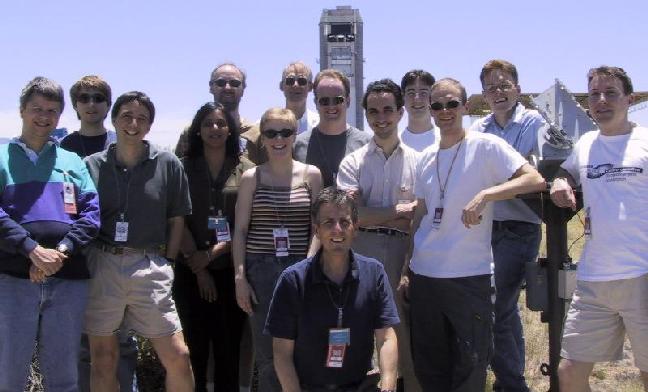 |
Who works on STACEE and how to contact them.
|
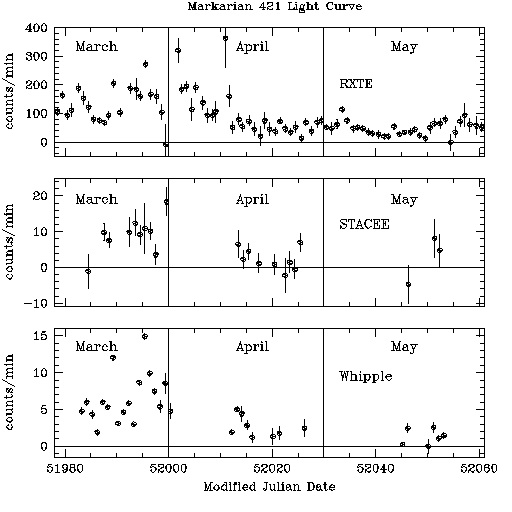
|
Links to publications, conference proceedings,
and talks on STACEE and STACEE science.
|

|
Funding
Support for STACEE in the U.S.
and Canada |
|
. |
|
| top
|

|
|











